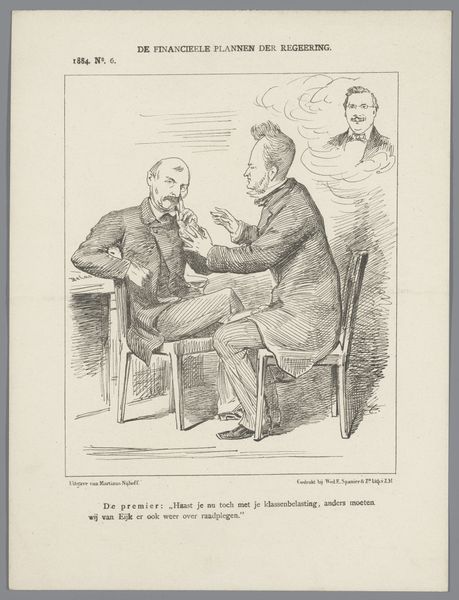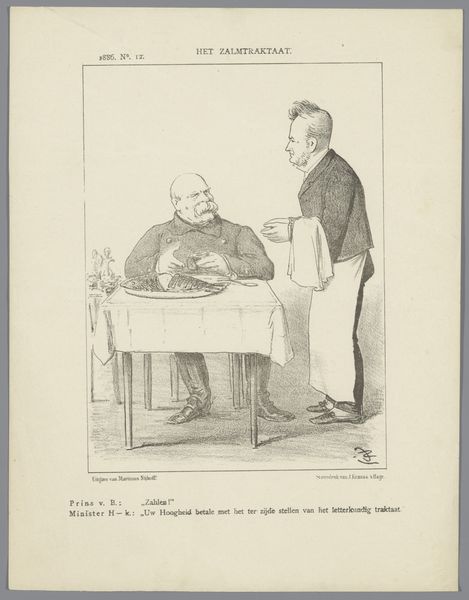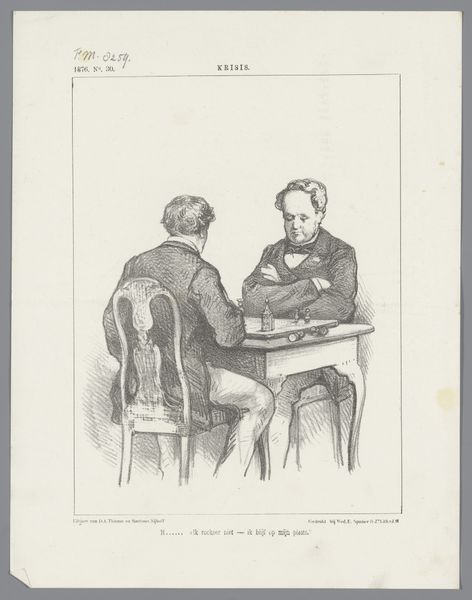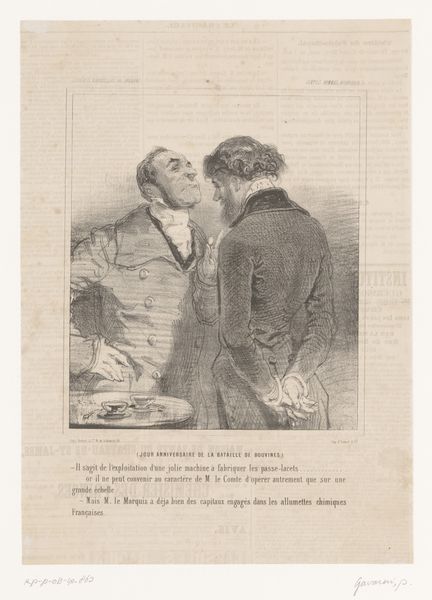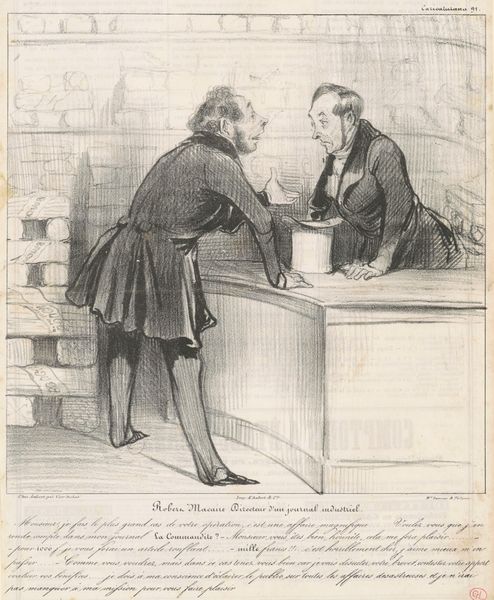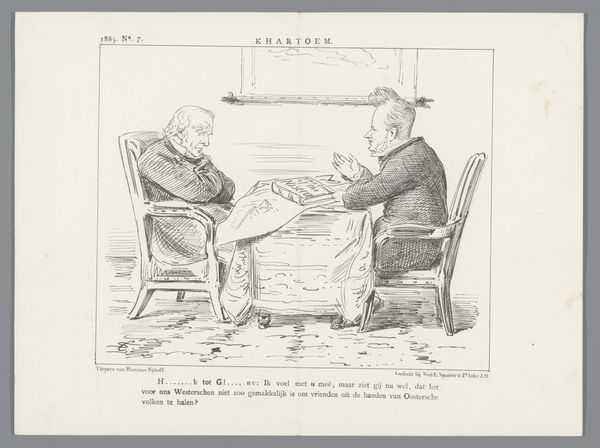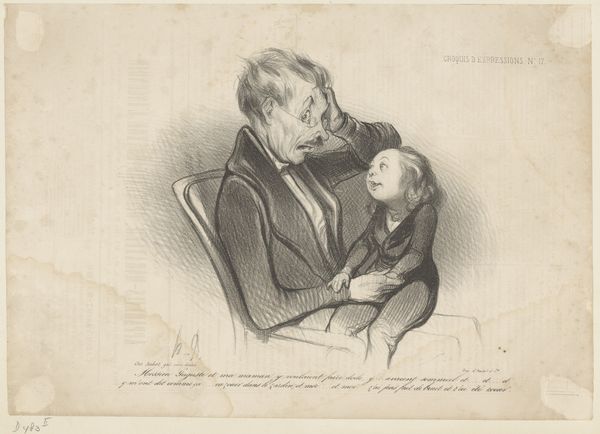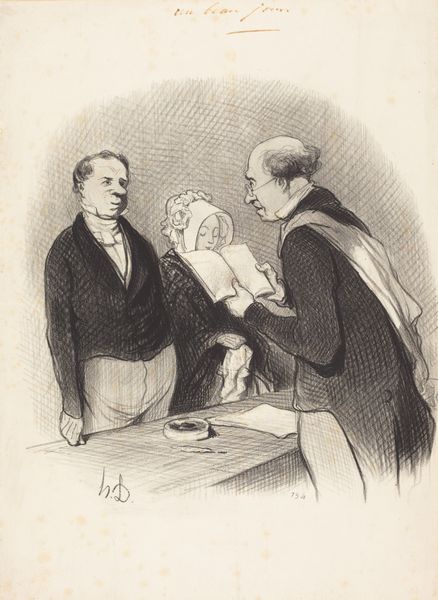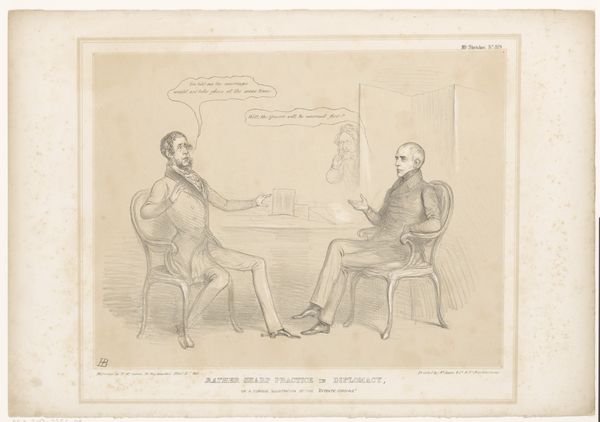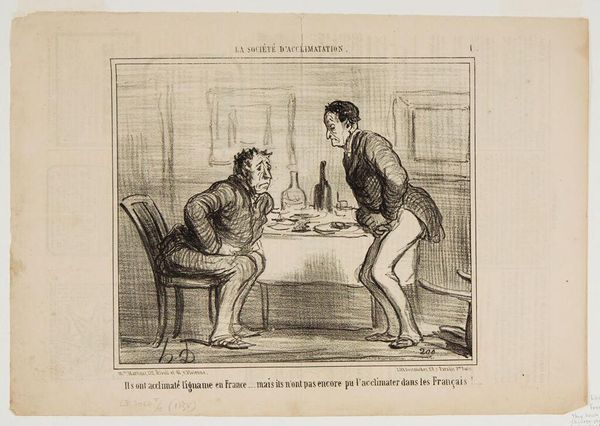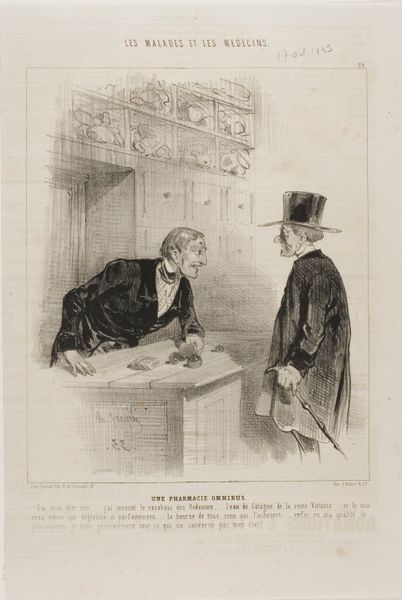
Spotprent op de drie nieuwe (conservatieve) kiesdistricten die Heemskerk op de kiestabel wilde plaatsen, 1875 1875
0:00
0:00
drawing, print, etching, paper, ink, engraving
#
portrait
#
drawing
# print
#
etching
#
caricature
#
paper
#
ink
#
history-painting
#
engraving
Dimensions: height 215 mm, width 275 mm
Copyright: Rijks Museum: Open Domain
Curator: This etching by Johan Michaël Schmidt Crans, made in 1875, is titled "Spotprent op de drie nieuwe (conservatieve) kiesdistricten die Heemskerk op de kiestabel wilde plaatsen." Editor: Immediately, I’m struck by the contrasting approaches to detail. One figure is finely rendered with strong cross-hatching, while the other is simpler and less defined, creating a visual tension. Curator: The heavier figure would be Johan Heemskerk, a prominent politician of the time. Note how he is depicted in meticulous detail, down to his attire, juxtaposed against the somewhat nebulous presentation of his interlocutor. The artist masterfully uses the graphic quality of etching. Editor: It's fascinating how he holds what appear to be playing cards depicting caricatures, symbols layered within symbols! I see visual tropes that reference authority versus figures of common citizenry perhaps? Curator: Indeed. Schmidt Crans subtly encodes the sociopolitical dynamics through allegory. The “cards” represent Heemskerk’s perceived manipulation of electoral districts, favoring conservative strongholds. Consider the almost architectural rendering of Heemskerk juxtaposed against these hand-held allegories. Editor: The cards, each containing a mini-narrative, imply that Heemskerk is dealing with societal elements as mere game pieces, dehumanizing them for political advantage. Notice how one card seems to invert societal hierarchy. It suggests deeper implications about social inversion, perhaps? Curator: Precisely. The formal austerity of the line work sharpens the political commentary, eschewing overt emotionality for calculated observation and visual metaphor. Schmidt Crans creates visual hierarchy through the graphic density of the linework. Editor: I’m now compelled to look at this work through the lens of performativity and political theatre. I recognize that this image holds a lot of symbolic and historical relevance. Curator: Yes, and analyzing the piece with considerations towards its pure composition—line, form, spatial dynamics—enhances how powerfully this singular sheet relays an instance of pointed socio-political critique. Editor: Seeing the layers of political symbols has expanded my understanding. What initially appeared to be a simple rendering unveils itself as a complex narrative of its own time, and strangely resonant to ours.
Comments
No comments
Be the first to comment and join the conversation on the ultimate creative platform.

